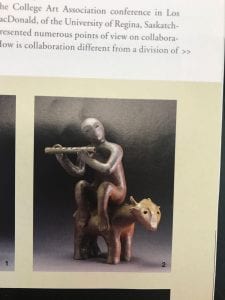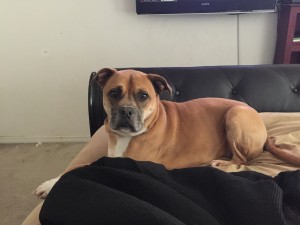
I found myself embraced in the loving essence of pottery once again. A higher level of Ceramics in which I create my own portfolio. But here is the first monstrosity I have trouble slaying every year; the bLoG pOsT. Not to complain about these behemoths, but my past interactions with them have been horrendous. I ponder if this year would be different or a repeat of fatal years…
Express
How do ceramic artists tell stories? Find an artwork and explain how the artist communicates with the viewer.

Found one. I’ve wandered upon this majestic beauty while skimming through a Ceramic Magazine. I don’t remember which one beheld this artwork. And it irritates me more so that I haven’t included a caption referring back to the artist who created it. Although I apologize for not finding the artist to give credit to, I just want to explain how this artist told his/her story. But first, I want to portray my personal reaction for this piece. This is an abstract artwork. The subject isn’t definite, as it can be perceived in many ways. My perspective of the artwork is a knight in shining armor, positioned in the cliche hero stance. The artist communicated this artwork to me with the material and form used to create the artwork. Knights are usually rough and hardened in battle; thus the material reflects that segment with a harder and shinier material. The artist also tells their story with the form. Although not exact in every angle, the model has the same silhouette like a knight in shining armor.
In what ways can ceramic artists encourage a direct interaction with viewers?

Ah hello happy flute player! I see the artwork has encouraged a direct interaction with his/her viewers; just look at those smiling eyes! But the intention that the ceramic artist created to encourage a direct interaction was in the way how personal it looks to the viewers. With the human in a sitting position and his hands lowering the flute, he seems ready to play you a song. The mood portrayed in the simple artwork itself encourages a more joyful tone with the viewer. Since this piece is a representational artwork, its more direct when viewers gaze at it, allowing the interaction of tone to be simplified and not complicated.
Envision
What artworks did you observe that helped inspire your ideas. Be specific in describing how they influenced your planning.

I apologize but I can’t actually answer this question accurately. In regards of at least trying in my best way to answer this, I have to say my ideas was aspired from reality. I can’t actually claim that there was an artwork I observed that inspired me. But I will describe how an event influenced my planning when coming up with my idea. I was moving. I was moving to another house not too far from here due to rental problems that were occurring. And one of the new rules to this new house I was moving into was that there were to be no pets allowed. This would allow the house to stay in proper conditions (as this was another rental home). We had a dog; a mix breed of a boxer and Labrador. Once realizing I would have to leave my dog, it inspired me to make an artwork in remembrance to her. I wanted to create an artwork that reflected how she loved to have belly rubs.
What ideas for forms or stories did you consider before making a decision? What ideas are you still considering?


And this is where I contemplated the forms I would construct. My first idea was a statue of my dog on its back, ready for some belly rubs. I had also considered pepper and salt shakers, as you’ll be grabbing around the stomach, like a belly rub. But after further consideration, that seemed a bit inappropriate where the dog would be lifted in the air. Another option was the dog painted on a ceramic frame, but I found myself not too enthusiastic towards that idea. I finally decided to do a statue. I am no longer considering towards any other ideas, and is committed to pulling this idea all the way through.
Observe
How do life experiences influence the way you relate to art?

Life experiences are crucial when observing artwork. They shape how we perceive the artwork, and how it makes us feel. It makes us think back to that experience and makes us remember how we feel. Not only does the maker makes us feel again, I think we make the artwork enhanced in our own way. Emphasis on “make”. For instance, the artwork above portrays a wolf ready to gobble up its prey. Likely it will invoke fear into most people, as once in everyone’s lifetime we felt inferior or fearful of a greater monster. But if someone else had a life experience of almost starving to death, the person may want to unconsciously encourage the wolf to not die and gobble up the hare.
How does a viewer “read” an artwork?

Viewers can “read” an artwork in two ways. One way is how the eye moves. If the person normally reads from up to down and left to right, they will unconsciously observe or “read” the artwork in the same way, if there was movement in the artwork. But a viewer “reads” the tone of the artwork the same way as a book. The details encompass the main idea and propel the effect higher. So if the effect were to be a depressing tone, then the viewer would be able to sense it by reading the details in the book or the small details in an artwork. Although books may have alliteration and other sound effects that can leave a soft or harsh tone, colors on artworks do the same. Dark and bright colors could be paired together to signify a harsher separation from the opposite side or complimentary colors could wind together to give a steady flow for the viewer to “read”.














































